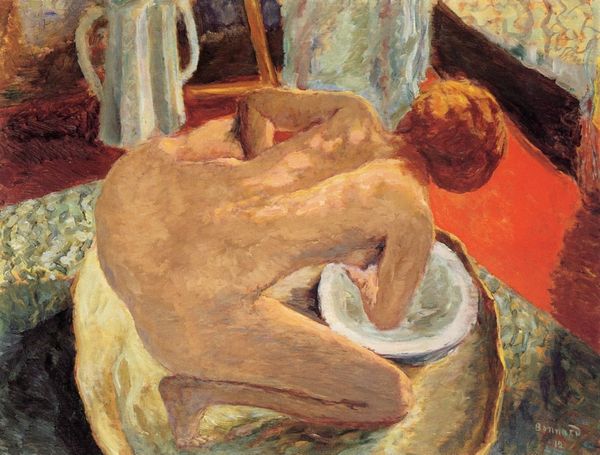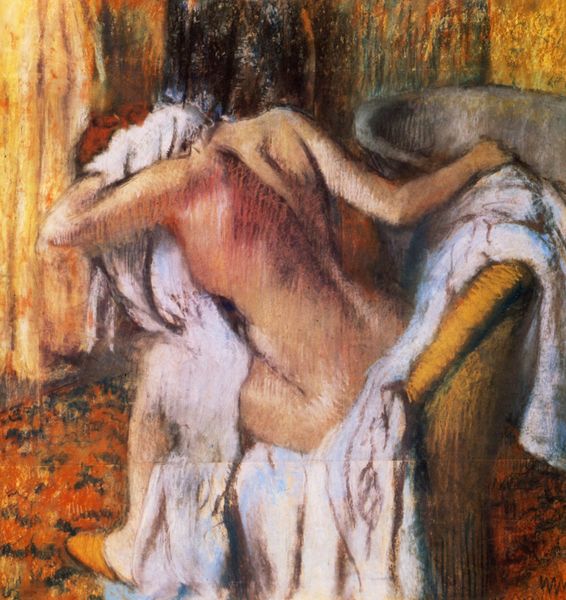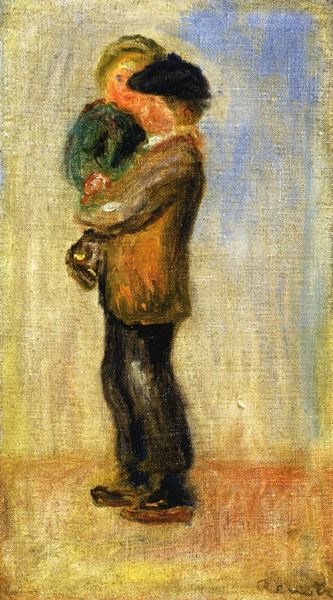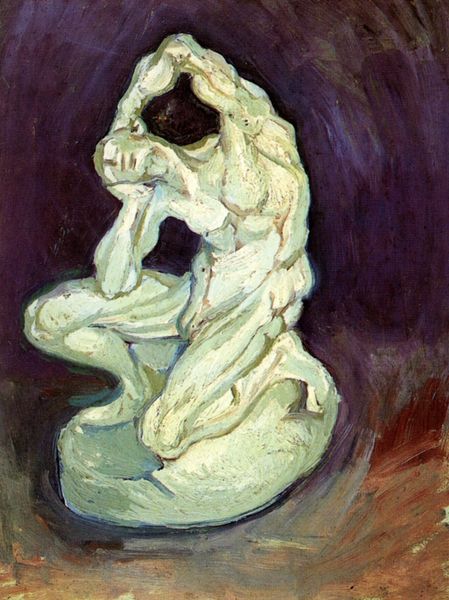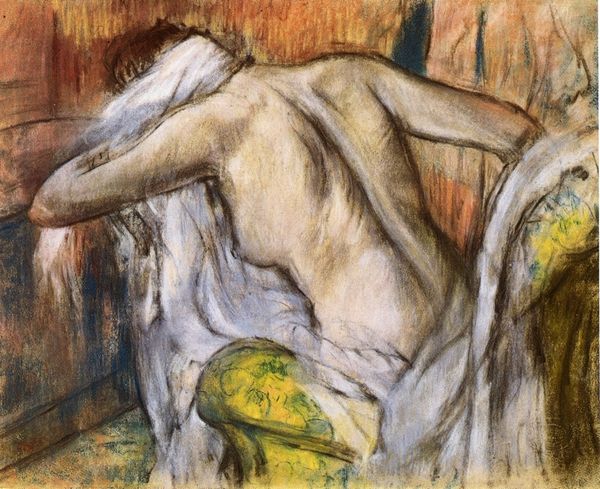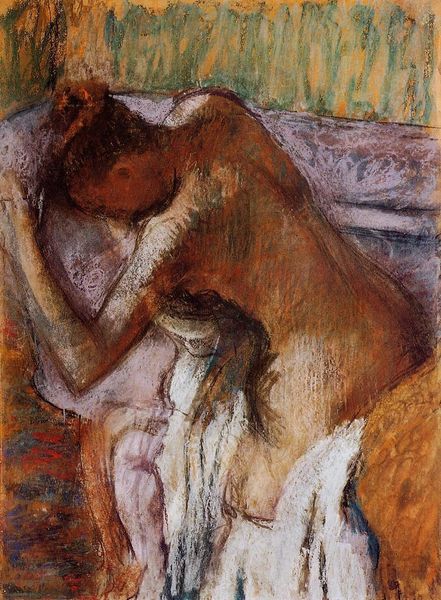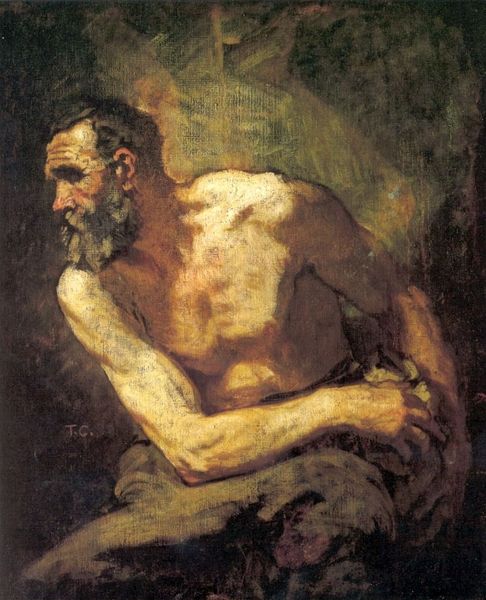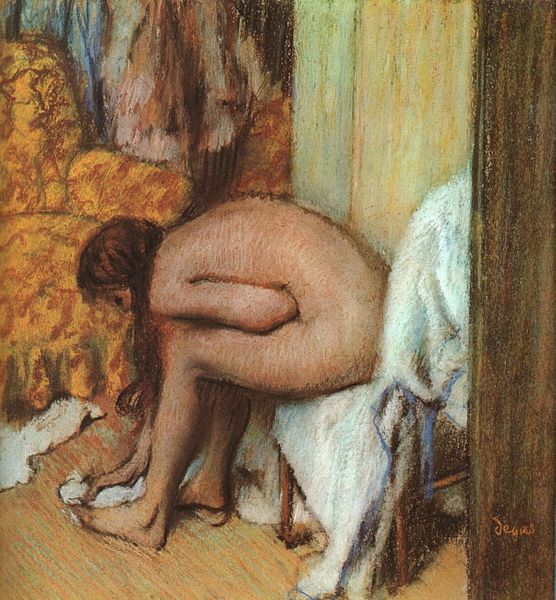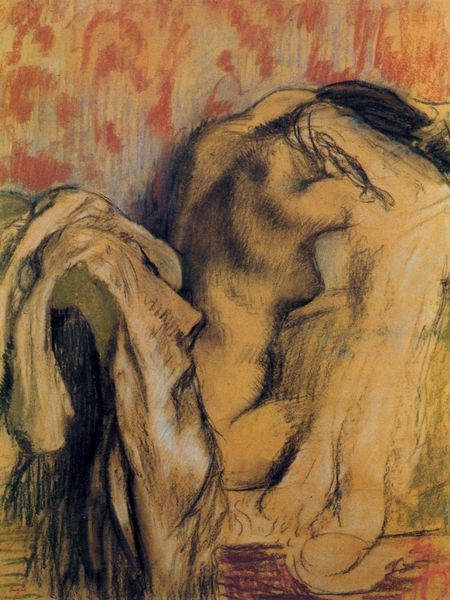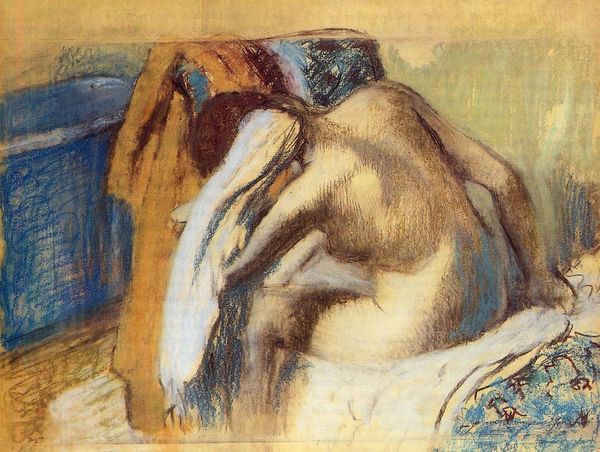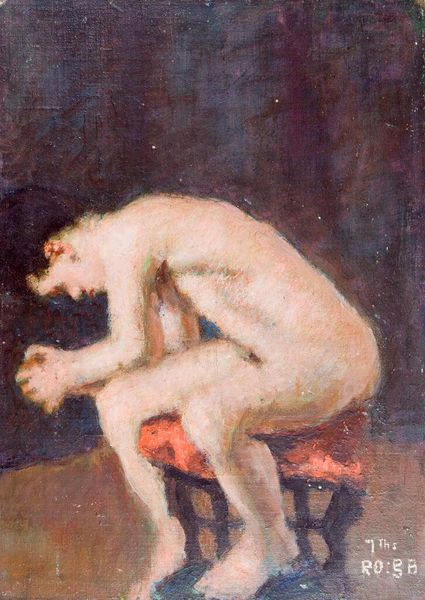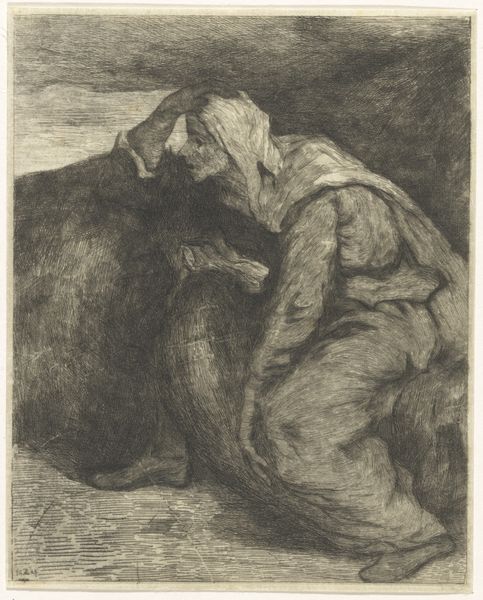
drawing, painting, oil-paint
#
portrait
#
drawing
#
painting
#
impressionism
#
oil-paint
#
charcoal drawing
#
oil painting
#
underpainting
#
human
#
portrait drawing
#
facial portrait
#
nude
#
portrait art
#
fine art portrait
#
realism
Dimensions: 107 x 103 cm
Copyright: Public domain
Editor: Here we have Paul Cézanne's "The Negro Scipio," painted in 1867, an oil on canvas. What strikes me immediately is the figure's pose – so slumped and exhausted. What do you see in this piece? Curator: I notice primarily Cézanne's technique. The impasto application of paint, particularly in the drapery, establishes a dynamic surface. Note how color is applied in planes, rather than blended seamlessly, almost prefiguring his later explorations of form. The shadows are heavy, aren't they? Editor: They are, and that emphasis gives the figure weight and volume. Is it just me, or does the background seem unfinished, almost like a void? Curator: Precisely. This void directs the viewer's focus onto the figure itself and accentuates the formal interplay between light and shadow defining its musculature. Observe also how the lines aren’t traditional but expressive of form, hinting towards planes and the understructure. Editor: So, it's less about representing a person, more about exploring form and structure? Curator: Indeed. Cézanne employs the human figure as a vehicle to examine pictorial space, mass, and the very act of painting itself. The expressiveness rests in those brushstrokes more than the person depicted, almost daring you to touch it. Doesn't this figure almost have its own gravity because of its treatment of shapes and tones? Editor: I can see that. The attention to those basic elements really elevates it beyond a simple portrait. I will definitely look at Cezanne's work differently after our conversation. Curator: And I, after reconsidering, also learned to rethink its cultural presence; form follows content, or the opposite? Thanks.
Comments
No comments
Be the first to comment and join the conversation on the ultimate creative platform.

